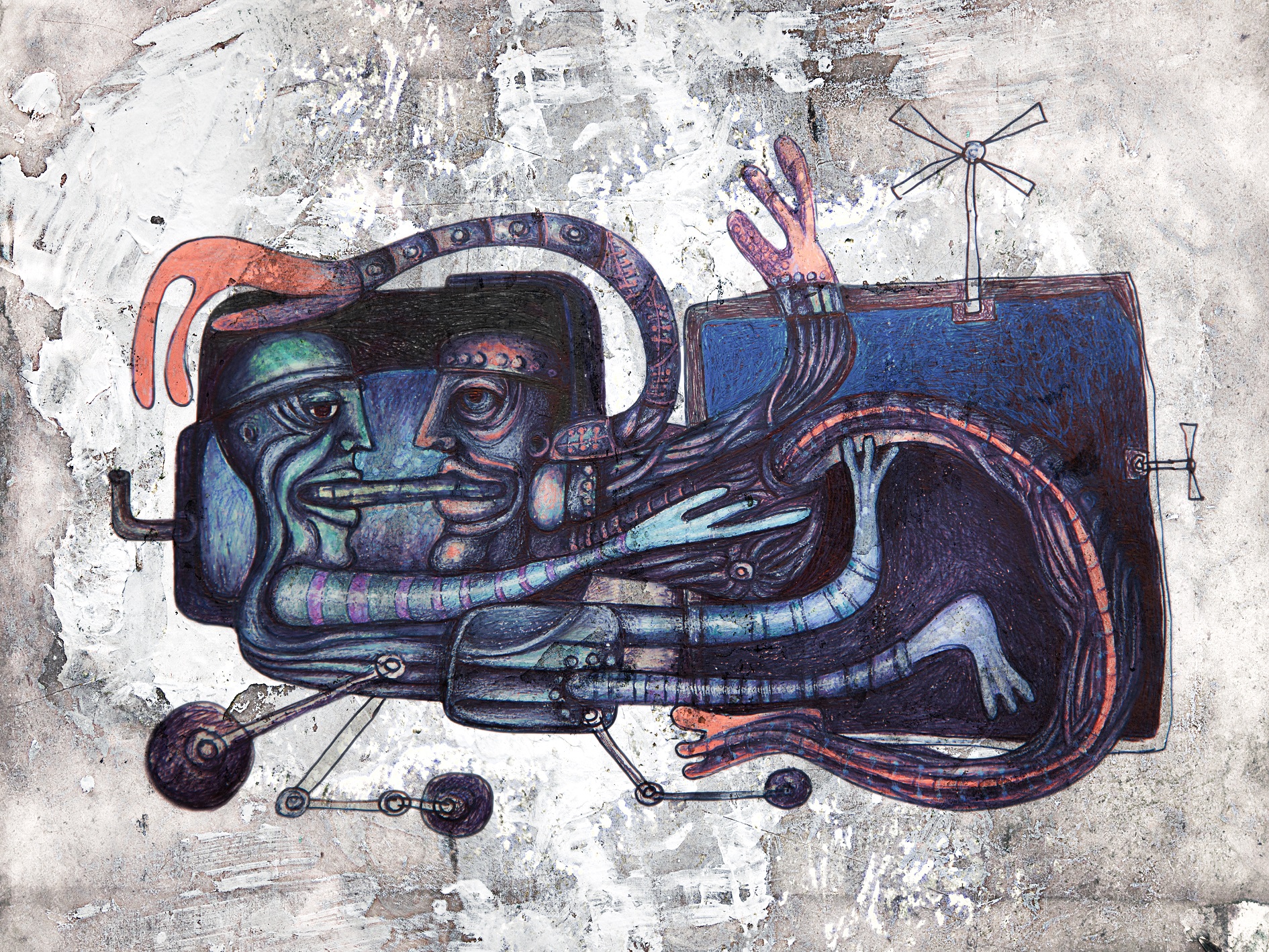 Three anomalous experiences that are rare but explained within conventional frameworks are autoscopic hallucinations, stigmata, and the multiple nuclei of consciousness which seems to be the chief characteristic of Dissociative Identity Disorder (DID). In an autoscopic phenomenon the individual briefly perceives a doppelganger of themselves in extrapersonal space from the vantage point of the first-person perspective (Blanke, Landis, Spinelli, and Seeck, 2004). Though not common autoscopic hallucinations are well understood and have been neuroanatomically localized to posterior areas of the superior temporal gyri, the medial temporal gyri, and the angular gyrus of the right hemisphere (Wallis and Wright, 2009). Stimulation of these areas produces autoscopic phenomena.
Three anomalous experiences that are rare but explained within conventional frameworks are autoscopic hallucinations, stigmata, and the multiple nuclei of consciousness which seems to be the chief characteristic of Dissociative Identity Disorder (DID). In an autoscopic phenomenon the individual briefly perceives a doppelganger of themselves in extrapersonal space from the vantage point of the first-person perspective (Blanke, Landis, Spinelli, and Seeck, 2004). Though not common autoscopic hallucinations are well understood and have been neuroanatomically localized to posterior areas of the superior temporal gyri, the medial temporal gyri, and the angular gyrus of the right hemisphere (Wallis and Wright, 2009). Stimulation of these areas produces autoscopic phenomena.
Stigmata, on the other hand, is a rare physiological phenomenon where an individual develops bleeding wounds and marks corresponding to the areas of Christ’s body that were purportedly impaled during the crucifixion (Kelly and Kelly, 2007). Many researchers see stigmata as clear evidence of psychophysiological influence where severe emotional distress interacts with immune system dysfunction to generate a physiological response, usually bleeding, inflammation, or bruising (Simpson, 1984). Finally, we have the fairly disparate characteristics, demeanor, and symptomatology associated with the different “alter” personalities of individuals with the rare dissociative condition now more generally called DID (Kelly and Kelly, 2007). Working within a biomedical framework contemporary psychiatry accepts these extreme phenomenological aberrations as failures in functional integration between the attractor networks responsible for conscious awareness, memory, emotion, identity, and perception (Gerard and Tononi, 2000).
Three anomalous experiences that are rare and difficult to explain within conventional frameworks of knowledge are inedia, teleportation, and bilocation. Many religious fakirs will speak about their apparent inedia, that being a supranormal ability to survive without food and in many cases without water too (Rogo, 1982). It has been reported in Hindu and Sufi Saints; apparently St. Giri Bala implemented a yogic technique which allowed her to thrive for years without eating (Yogananda, 1998). Then there’s teleportation, the spontaneous supranormal movement of individuals or things over distances or through objects, which is purportedly rare and occurs in secular persons, particularly in children (Gersi, 1991). The Flying Men of Haiti claim their teleportation powers are under volitional control. Finally there is bilocation, a spontaneous phenomenon involving the ability to be in two places at the same time and be able to engage in conversations and physical activities whilst in these locations. In Rogo’s book, Miracles: A Parascientific Inquiry Into Wondrous Phenomena, the facts of bilocation are described as incongruent with any conventional theory in the physical, natural, and psychological sciences.
Three anomalous categories that are not rare but difficult to explain within conventional frameworks are electronic voice phenomena (EVPs), precognition, and the recollection of veridical past-life memories. EVPs may be defined as sounds and voices coming from deceased persons which mysteriously imprint themselves onto a phonograph, tape, or digital medium and can later be heard on audio playback (MacRae, 2004). McRae (2004) performed a series of well controlled experiments on EVP using a sound-proofed Faraday cage and discovered that the voices he recorded were genuine sounds and could not be attributed to stray radio signals, artifacts, subvocalizations, fraud, or imagination. Precognition, a form of extrasensory perception, is the reception of knowledge pertaining to future events that cannot be rationally inferred from the current state of affairs (Radin, 2009). Precognition is a fairly commonplace phenomenon but it cannot be accommodated by the paradigms of eliminative materialism and demands revision of the Cartesian-Kantian epistemological worldview. Last but not least we have cases of the reincarnation type involving children beset by past-life memories with explicit details about their past personality which are later verified as veridical through rigorous investigation (Stevenson, 1980). These experiences are theoretically couched within Eastern metaphysical philosophies however they cannot be reconciled with operative logical cognition of the developed West and its scientific tools.
References
Blanke, O., Landis, T., Spinelli, L., & Seeck, M. (2004). Out‐of‐body experience and autoscopy of neurological origin. In Brain: A Journal of Neurology 127(2), 243-258.
Edelman, G. M., & Tononi, G. (2000). A universe of consciousness: How matter becomes imagination. New York, USA: Basic books.
Gersi, D. Faces in the smoke: An eyewitness experience of Voodoo, shamanism, psychic healing, and other amazing human powers. New York, NY: Jeremy P. Tarcher.
Kelly, E. F., & Kelly, E. W. (2007). Irreducible mind: Toward a psychology for the 21st century. Maryland, UK: Rowman & Littlefield.
MacRae, A. (2004). EVP and new dimensions. New York, USA: Lulu.
Radin, D. (2009). The conscious universe: The truth of psychic phenomena. New York, NY: HarperOne.
Rogo, S. (1982). Miracles: A parascientific inquiry into wondrous phenomena. New York, USA: The Dial Press.
Simpson, C. J. (1984). The stigmata: Pathology or miracle? In British Medical Journal, 289, 1746-1748.
Stevenson, I. (1980). Twenty cases suggestive of reincarnation. Charlottesville, VA: University of Virginia Press.
Wallis, C., & Wright, W. (2013). In J. Bickle (Ed.), The Oxford Handbook of Philosophy and Neuroscience. New York, USA: Oxford University Press.
Yogananda, P. (1998). Autobiography of a Yogi. San Francisco, CA: Self-Realization Fellowship.








